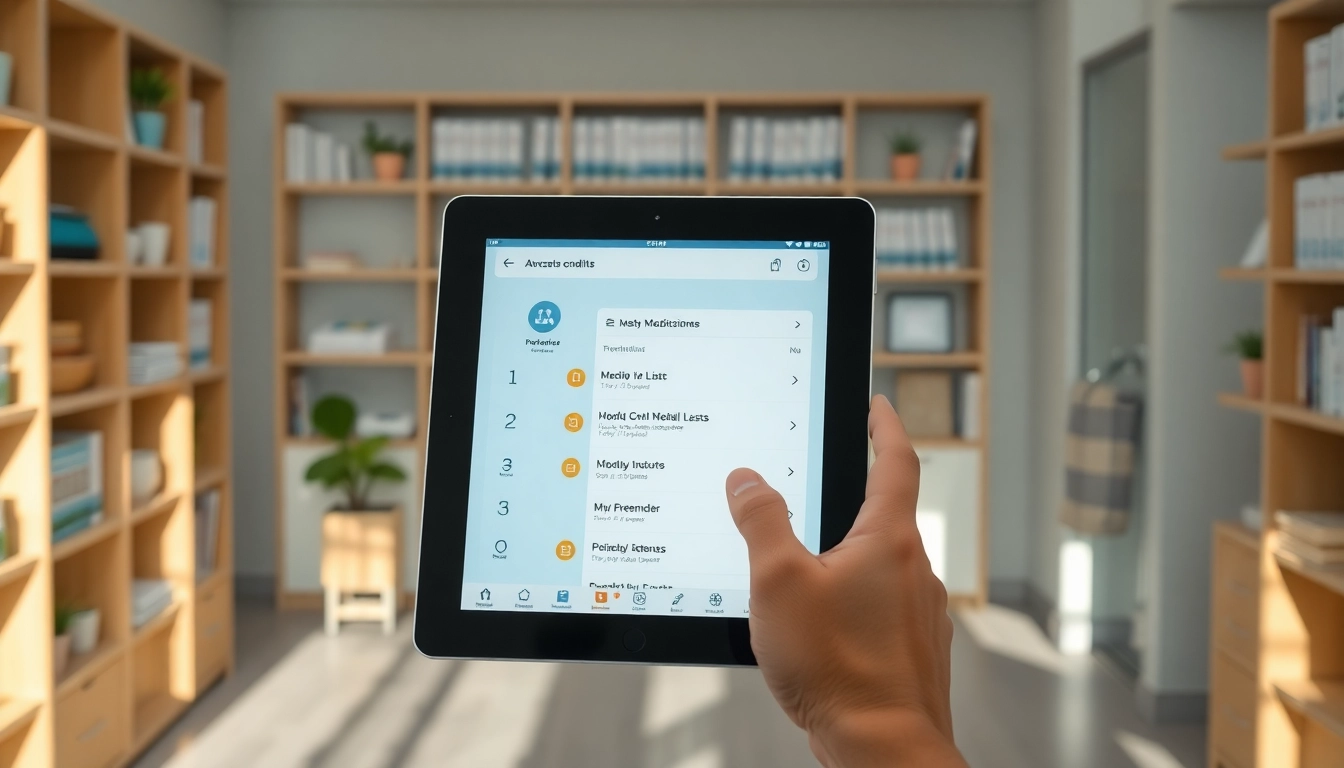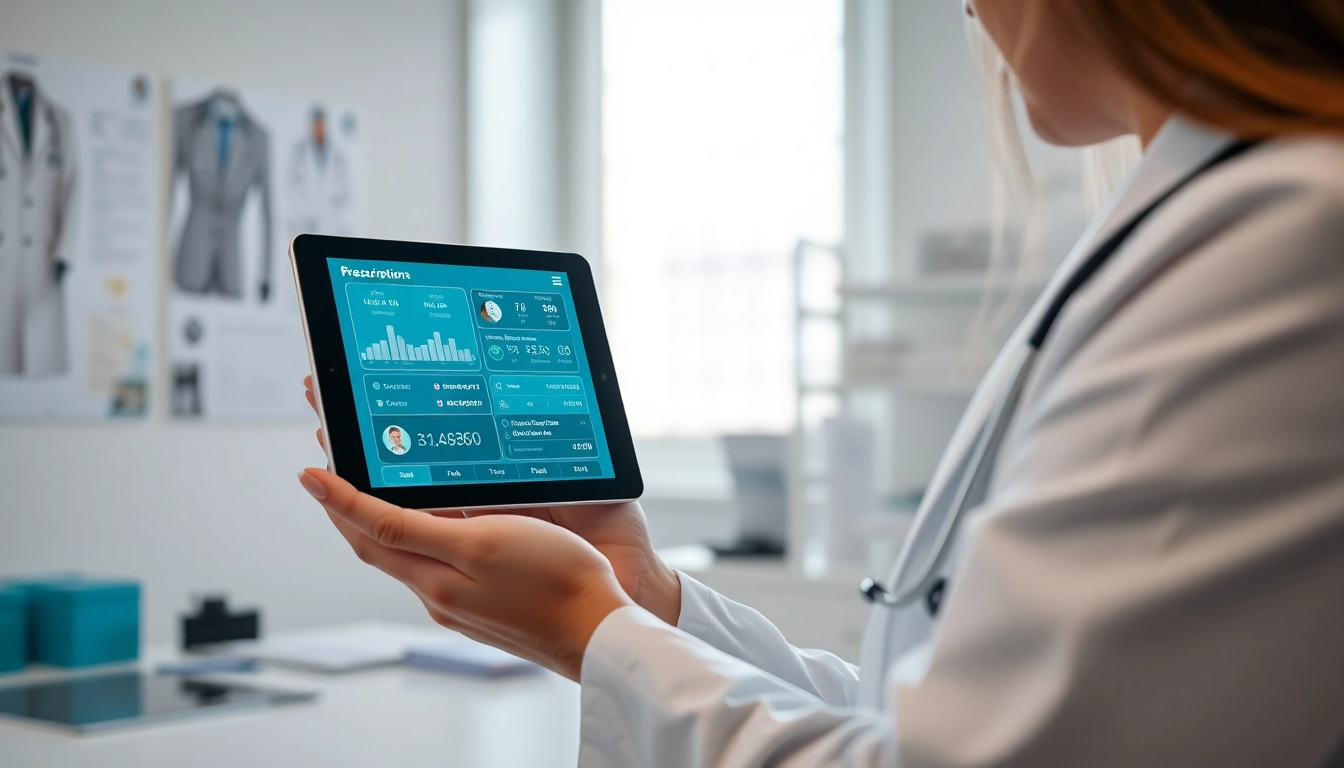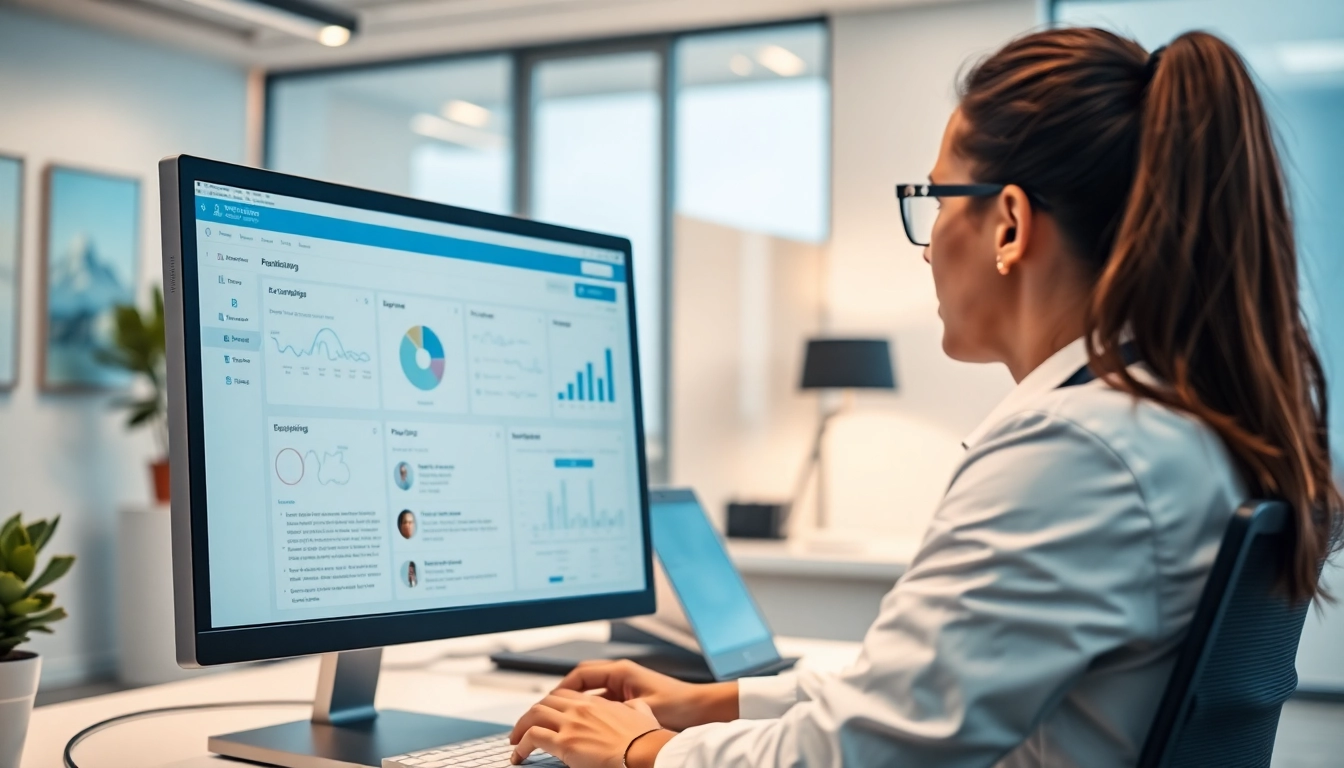Understanding the Need for Top Rated Prescription Applications
As healthcare evolves with digital transformation, top rated prescription applications have emerged as essential tools for ensuring effective medication management. These applications cater to both patients and healthcare providers, simplifying processes that were once cumbersome and prone to error. This article explores the significance of utilizing top rated prescription applications in today’s healthcare landscape, emphasizing their advantages, features, and the considerations for selecting the right applications.
Advantages of Digital Prescription Management
The transition from traditional paper prescriptions to digital prescription management offers numerous advantages. One of the most significant benefits is enhanced accessibility. Patients can access their medication information anytime, anywhere, reducing the likelihood of lost or forgotten prescriptions. This convenience not only empowers patients but also streamlines the workflow for healthcare providers, enabling them to focus on patient care rather than paperwork.
Furthermore, digital prescription management facilitates real-time communication between patients and their healthcare providers. By leveraging these technologies, clinicians can ensure their patients have the necessary medications during appointments, improving adherence rates. Additionally, the ability to send prescriptions directly to pharmacies minimizes the chance of miscommunication and ensures a seamless pharmacy experience for patients.
How Prescription Apps Improve Patient Safety
Patient safety remains a paramount concern in healthcare, and top rated prescription applications play a pivotal role in mitigating risks associated with medication errors. These applications often feature safeguards, such as drug interaction alerts, which notify users if a prescribed medication interacts negatively with another they are already taking. This proactive approach significantly reduces the likelihood of adverse drug reactions, ultimately enhancing patient safety.
Moreover, many applications are equipped with tracking features that monitor patient adherence to medication schedules. By sending reminders to take medications on time, these apps help improve compliance, thus ensuring patients receive the full benefits of their prescribed therapies. Enhancing patient safety through technology has never been more achievable, marking a substantial stride toward improving overall health outcomes.
Common Features in Top Rated Prescription Applications
Top rated prescription applications share several common features that enhance their utility and user-friendliness. Some of these key features include:
- Prescription Management: Easily create, refill, and manage prescriptions from the convenience of a smartphone.
- Refill Reminders: Automated notifications that remind users when it’s time to refill their prescriptions.
- Drug Interaction Alerts: Alerts notify users about potential interactions between prescribed medications.
- User-Friendly Interface: Intuitive designs make navigation straightforward, even for those who are not tech-savvy.
- Health Tracking: Users can monitor their health metrics and medication adherence within the app.
These features not only enhance user experience but also support the healthcare ecosystem by ensuring better communication and workflow between all stakeholders.
Key Factors in Selecting Top Rated Prescription Applications
User Experience: Importance of Interface Design
Choosing the right prescription application heavily relies on user experience, specifically the design and functionality of its interface. An application with a clean, intuitive design fosters ease of use, which is especially important for an audience that may include elderly patients or those who are not technology proficient.
A user-friendly interface reduces frustration and ensures that users can navigate through complex functions with minimal learning curves. Additionally, top rated applications often offer customizable settings that allow users to adjust the app to their preferences, enhancing their overall experience.
Data Security and Privacy in Healthcare Apps
In an era where data breaches and privacy concerns dominate discussions about digital technologies, the security of health information is critical. Patients must trust that their sensitive data, including medication history and personal health information, is well-protected. When evaluating a prescription application, one should prioritize those with robust security measures, such as encryption, two-factor authentication, and clear privacy policies that detail data use and sharing.
Moreover, adherence to regulations such as HIPAA (Health Insurance Portability and Accountability Act) is essential for any top rated prescription application. Compliance ensures that user data is handled ethically, promoting trust and reliability within the healthcare framework.
Integration with Healthcare Providers and Pharmacies
Another crucial factor in selecting a top rated prescription application is its ability to integrate seamlessly with healthcare providers and local pharmacies. An application that allows direct communication between patients, providers, and pharmacists can streamline the prescribing and dispensing process significantly.
Integration capabilities reduce redundancies, minimize errors, and facilitate timely communication regarding medication availability and changes. Patients benefit from this interconnectedness as it leads to improved adherence and health outcomes. Careful consideration of how an application interacts within the broader healthcare ecosystem can make a substantial difference in usability and effectiveness.
A Deep Dive into Popular Features of Top Rated Prescription Applications
Prescription Management and Refill Reminders
Effective prescription management is at the core of any top rated prescription application. Users should expect functionalities that allow them to not only view current prescriptions but also track their history and refill details. This feature often includes predictive algorithms that can estimate when a refill is necessary based on user input patterns.
Refill reminders act as critical touchpoints that prompt users to take action, ensuring they never miss a dose. These timely notifications can be tailored to suit preferences, such as daily reminders at specific times, enhancing medication adherence and overall health outcomes.
Drug Interaction Alerts: Safety First
In the journey towards optimal health management, the ability to identify potential drug interactions is invaluable. Top rated prescription applications often provide robust alerts that notify users of possible risks when they enter new medications into their profiles. This feature is crucial not only for patients managing multiple prescriptions but also for those with chronic conditions requiring complex treatment plans.
By prioritizing safety through such measures, these applications contribute to better health management practices and mitigate the risk of adverse effects linked to medication interactions.
User Reviews: Learning from Community Feedback
User reviews are an essential aspect of any application’s credibility and usability. The healthcare space is no exception; potential users often rely on the experiences shared by their peers to make informed decisions. Top rated prescription applications should be transparent about user feedback, allowing prospective users to gauge the application’s real-world effectiveness.
Reading user reviews can provide insights into the app’s performance, potential issues, and overall satisfaction. By scrutinizing community feedback, users can find applications best suited to their individual needs and preferences.
Maximizing Benefits: Strategies for Using Top Rated Prescription Applications
Personalizing Your Experience with App Settings
To fully enjoy the benefits of top rated prescription applications, users should consider taking the time to personalize their settings. Tailoring features like notification frequencies, themes, and the layout of displayed information can significantly enhance the user experience.
Understanding the app’s capabilities and setting configurations that align with personal routines can foster a more engaging and effective usage experience. The goal is to find a balance that supports health management while preventing unnecessary distractions.
Staying Engaged: Tracking Your Health through Apps
Most top rated prescription applications include features that allow users to track not only their medications but also their health metrics and conditions. By routinely logging health data, users can gain vital insights into their medical trajectories, ensuring that they remain engaged in their health management journey.
Many applications enable users to generate reports that can be shared with healthcare providers, promoting collaborative discussions on health progress and necessary adjustments in treatment. This partnership fosters a more proactive approach to personal health management.
Sharing Information with Healthcare Providers
The ability to seamlessly share health information from prescription applications with healthcare providers establishes a foundation of collaboration that is critical for effective treatment. Top rated applications often facilitate data-sharing features that ensure clinicians have access to their patients’ up-to-date medication histories and health statuses.
This shared access promotes a holistic view of the patient’s health, allowing for informed decision-making and minimizing the likelihood of prescribing errors or duplications in therapy.
Future Trends in Top Rated Prescription Applications
Technological Advancements to Look Out For
The landscape of healthcare technology is ever-evolving, and prescription applications are no exception. As technology progresses, we can expect to see increasingly sophisticated features, including enhanced artificial intelligence capabilities for better predictive algorithms that can anticipate patient needs more accurately.
Additionally, the integration of wearables and remote monitoring devices with prescription applications signifies a move towards a more comprehensive healthcare management system. This could allow for a dynamic adjustment of treatment plans based on real-time data, improving overall health outcomes.
Shifts in Healthcare Regulations and Their Impact
The regulatory environment for healthcare applications is also continuously changing, with potential impacts on how prescription applications function. New regulations may introduce stricter requirements for data security, patient consent, and overall patient experience. As regulations evolve, developers will need to adapt their applications to ensure compliance while maintaining user-friendliness.
Keeping abreast of these regulatory changes is not only crucial for application developers but also for users who rely on these tools for their health management.
The Role of Artificial Intelligence in Prescription Apps
The incorporation of artificial intelligence within top rated prescription applications is set to revolutionize the healthcare experience. AI can enhance features such as drug interaction alerts, adherence tracking, and personalized health recommendations based on machine learning algorithms that analyze user data.
By leveraging AI, prescription applications can provide patients with intelligent insights that promote healthier choices and streamlined healthcare processes. This pioneering technology holds great promise for the future of health management and engagement.




